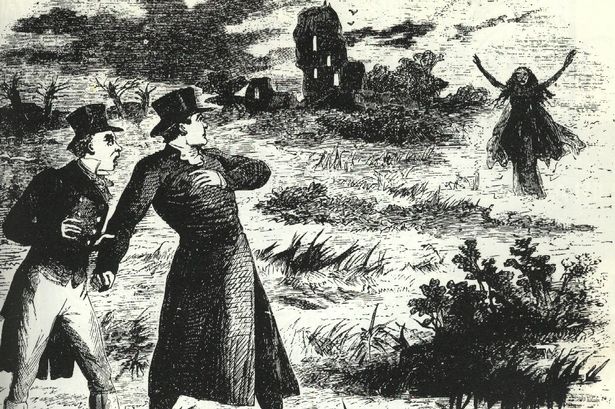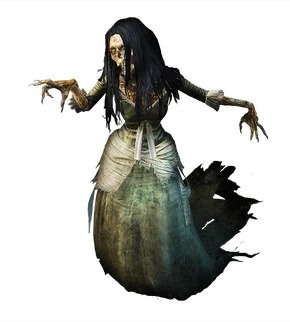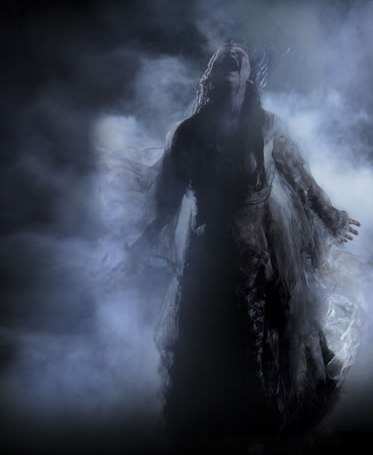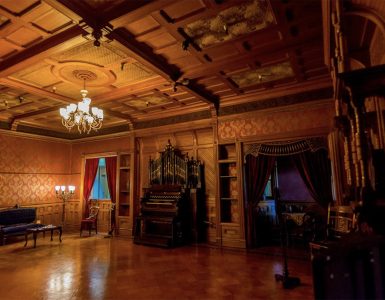The Banshee, with their ethereal beauty and haunting wails, have captivated the imagination of many cultures throughout history. These supernatural beings are often associated with death and the foretelling of impending doom.

Origins and Legends of the Banshee
The concept of banshees is deeply rooted in Irish folklore, where they are known as “Bean Sí” or “Ben Side,” meaning “woman of the fairy mound.” According to legend, banshees are female spirits, often connected to specific families, who act as harbingers of death. They are said to appear before the passing of a family member even if that family member is far away and no news has reached the family. It’s also a predictor of death that would warn a person by screaming and wailing if the person were to enter a situation with a possible deadly outcome.
Banshees are believed to be descendants of the Tuatha Dé Danann, an ancient race of supernatural beings in Irish mythology. Over time, they came to be associated with the fairy folk and the spirit world. The origin stories of banshees vary, with some tales suggesting that they were mortals who were transformed into spirits after suffering tragic deaths.

Banshee Characteristics and Appearances
Banshees are typically described as beautiful, pale women with long, flowing hair and wearing white or gray garments. In some accounts, they are depicted as old hags with skeletal features and ragged clothing, reflecting their association with death and decay. Despite their ethereal beauty, their eyes are often described as red and swollen from constant weeping.
One of the most distinct characteristics of banshees is their mournful wailing. The banshee’s cry is said to be a combination of sorrowful weeping and a mournful song. It is believed that the intensity and loudness of the wail correspond to the proximity of death, with the sound growing louder as death draws near. The cry of a banshee is haunting and chilling, capable of instilling a sense of dread in those who hear it.

Cultural Significance of the Banshee
Banshees hold great cultural significance in Irish and Celtic mythology. They are often considered ancestral spirits, connected to specific families and bloodlines. The appearance of a banshee and her cry are seen as an omen of death, a warning to the family that someone is about to pass away.
In ancient times, banshees played a vital role in the grieving process. Their presence and cries were believed to provide comfort to the living, ensuring that the deceased received proper mourning and preparation for their journey to the afterlife. Banshees were also seen as protectors, guarding the family and guiding the souls of the departed to the other side.
Banshees in Pop Culture
The allure and mystery surrounding banshees have made them popular figures in literature, music, and other forms of media. They have appeared in various books, films, and video games, often portrayed as tragic and captivating figures. In contemporary pop culture, banshees are often depicted as supernatural beings with supernatural powers, capable of foretelling death or even causing harm to those who cross their path.
Their eerie nature and association with death continue to captivate audiences, ensuring their enduring presence in popular culture. Banshees have become iconic figures in fantasy and horror genres, adding a touch of mystique and suspense to many creative works.
Banshees are however, often misunderstood creatures outside of Ireland and thought of no more than shrieking ghosts, which are also how they are often depicted in video games.
- Two banshee characters, Lydia Martin and Meredith Walker, appear in the tv show teen wolf.
- A malevolent banshee is featured in season 11 of the tv show Supernatural.
- An archvillain in DC’s Superman comics takes up the name Silver Banshee. Among her powers are lethal hypersonic shrieking.
- A banshee appears in Disney’s 1959 film Darby O’Gill and the Little People (starring a young Sean Connery).
- In the book Harry Potter and the Prisoner of Azkaban, a banshee appears during a class where the students are to face their worst fears.
- The game The Witcher 3 features banshees, or Beann’shie.

Exploring Other Cultural Interpretations
While banshees are most commonly associated with Irish folklore, similar supernatural entities can be found in other cultures as well. In Scottish folklore, for example, the “bean-nighe” is a type of fairy known as a washerwoman who foretells death. She is often seen washing clothes by a stream or river and is considered an omen of death to those who encounter her. The bean-nighe is said to be dressed in green, with webbed feet and a single nostril, giving her a distinctive appearance.
In Welsh mythology, the “Gwrach y Rhibyn” is a hag-like spirit associated with death and misfortune. She is often depicted as an old woman with a withered appearance, dressed in rags. The Gwrach y Rhibyn is believed to roam the countryside at night, wailing and seeking revenge on those who have wronged her.
In Scandinavian folklore, there are similar entities known as “klokke” or “kludde,” which are female spirits associated with death and the underworld. They are often depicted as ghostly figures or witches and are believed to appear to individuals shortly before their demise.
While these entities share some similarities with banshees, each culture has its own unique interpretation and portrayal of these mournful spirits. It is fascinating to explore the diverse folklore and legends that have emerged around the world, all rooted in the universal themes of death, mourning, and the supernatural.
Banshees: Symbols of Mourning and Mystery
The enduring fascination with banshees can be attributed to their symbolism and the emotions they evoke. Banshees represent the universal human experience of loss and grief, serving as a reminder of the transient nature of life. Their ethereal beauty and mournful cries tap into our primal fears and the unknown, evoking a sense of mystery and awe.
Banshees also highlight the cultural significance of mourning and the rituals associated with death. In ancient times, the presence of a banshee ensured that the deceased received proper rites and that the family had an opportunity to grieve and honor their loved ones. The banshee’s role as a guardian and guide for the departed souls reflects the belief in the continuity of the spirit beyond death.
Conclusion
Banshees, with their haunting cries and enigmatic presence, continue to captivate our imagination and hold a significant place in folklore and mythology. Originating from Irish folklore, these mournful spirits have transcended cultural boundaries, appearing in various forms and interpretations across different traditions.
Whether seen as harbingers of death, ancestral spirits, or supernatural guardians, banshees represent our collective fascination with the supernatural, mortality, and the mysteries of the afterlife. Their enduring presence in popular culture serves as a testament to their timeless appeal and their ability to evoke a sense of both fear and intrigue.
As we delve into the legends and lore surrounding banshees, we not only explore the rich tapestry of human imagination and beliefs but also gain a deeper understanding of the universal themes of life, death, and the enduring power of the supernatural in shaping our cultural narratives.





